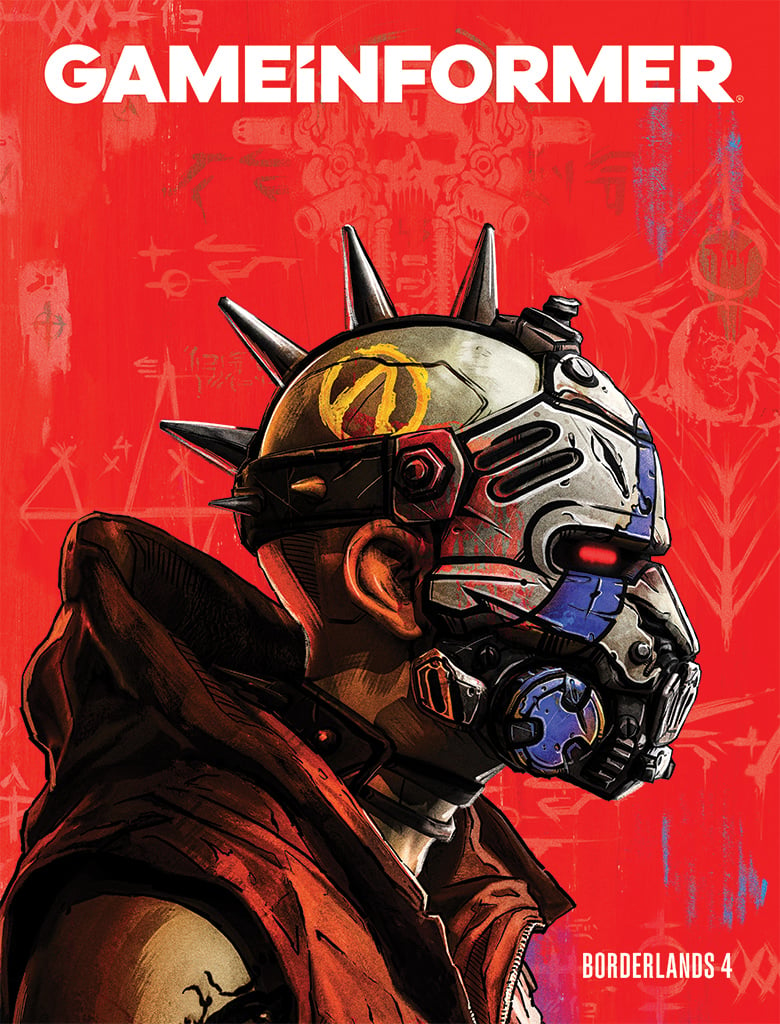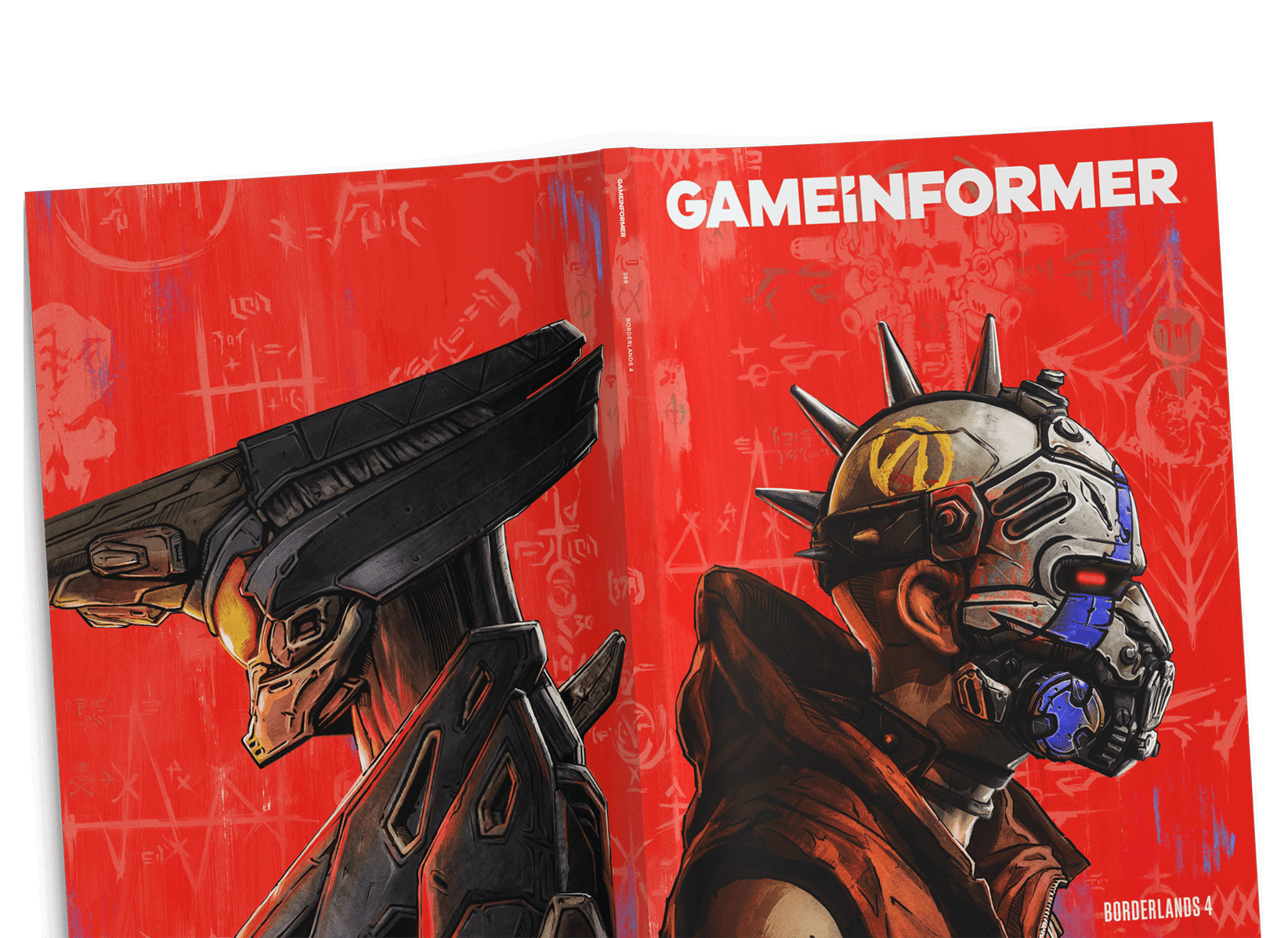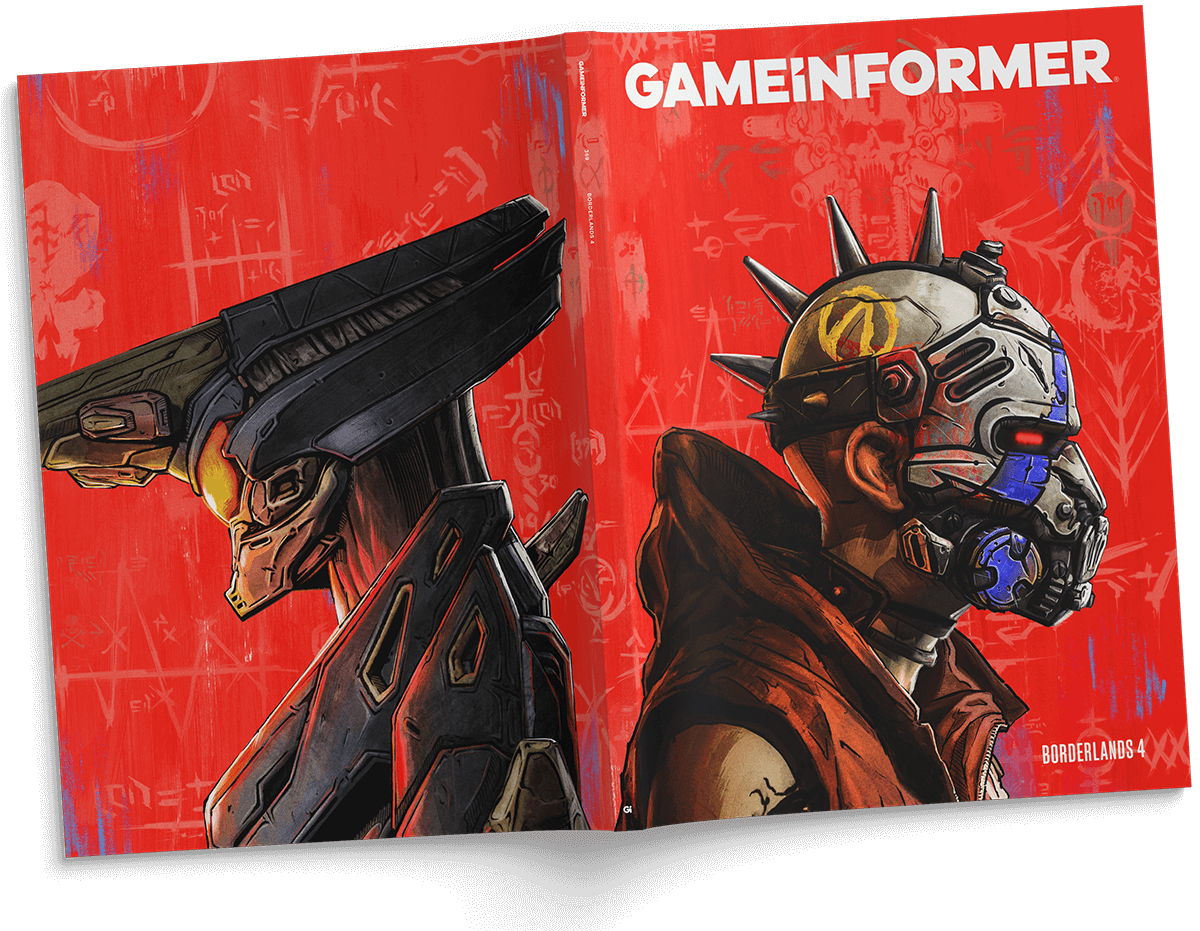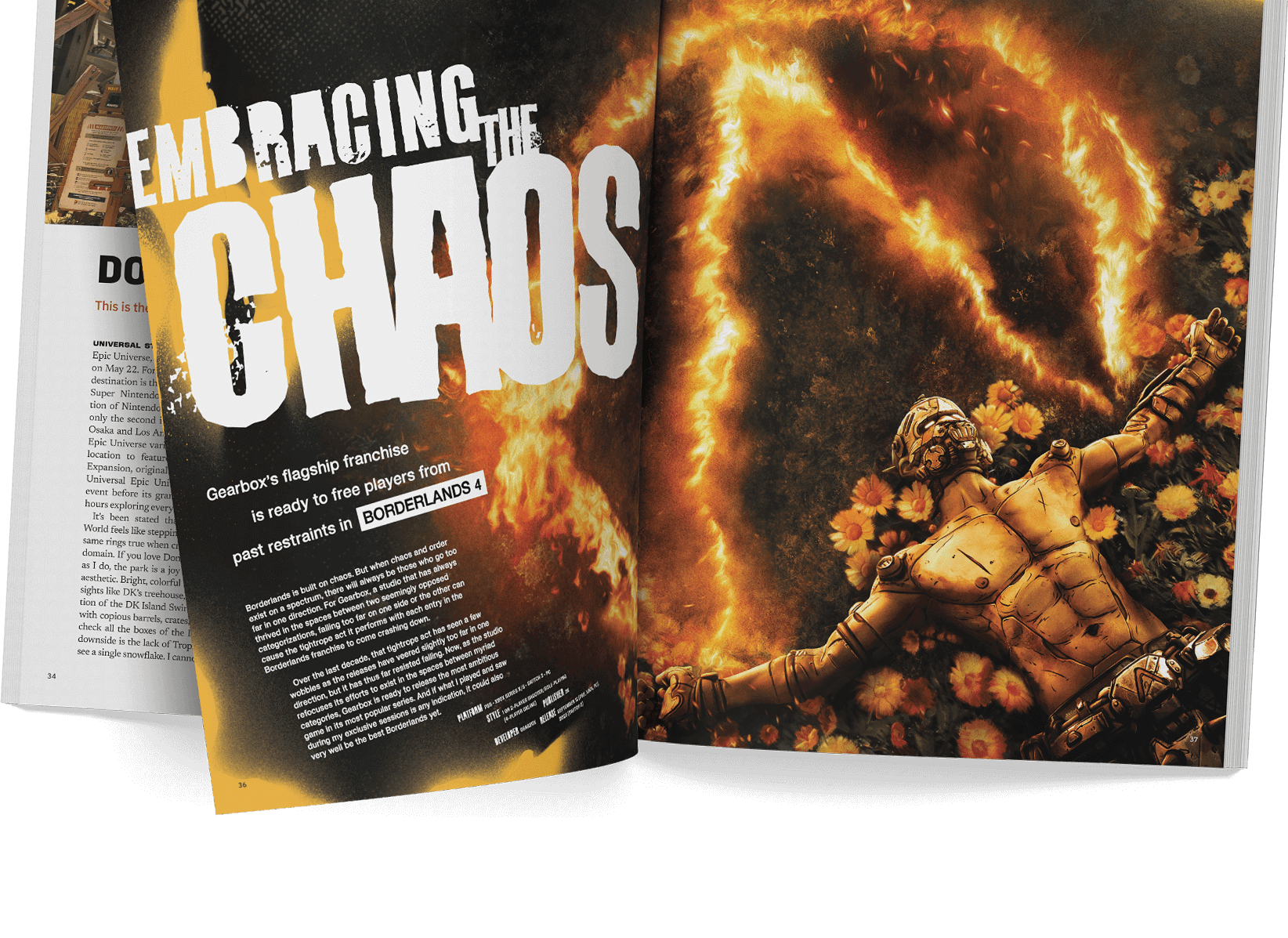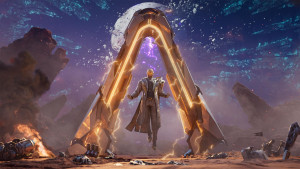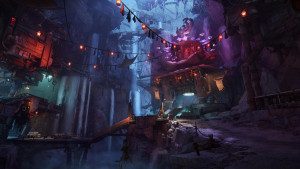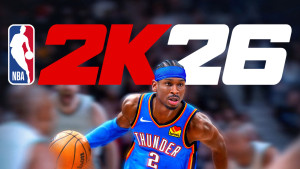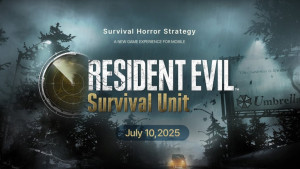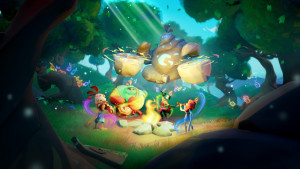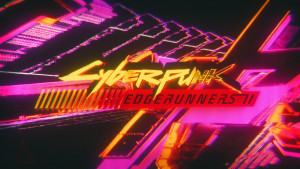Be the first to get Game Informer’s August Issue. Subscribe Now
Looking Ahead To Five Big Conversations Of 2016

Each year, we take a moment in early January to look back on the topics that surfaced multiple times in the previous year and what we anticipate talking about in the coming 12 months. These conversations are topics our readers tell us (via interaction and page views) that were important to them and will likely be of interest moving forward.
Four of our five predictions from last year continued to be relevant throughout 2015. The one about VR still doesn’t have resolution, but represents the question most frequently asked with regard to the fledgling technology.
Looking back on 2015

Consumers will remember the lessons of fall 2014’s failures
As expected, consumers were not quick to forgive publishers that sold broken games. While Microsoft and 343 Industries made a splash with Halo 5, owners of The Master Chief Collection continued to bring up its ongoing problems.
It’s likely that the longer gap between new Halo games saved Halo 5 from a disastrous launch. Instead, 343 took the top spot in the October NPD report, which represents United States retail traffic.
Ubisoft wasn’t so lucky. Despite being technically sound, Assassin’s Creed Syndicate met with weaker sales. “Clearly in our first week we were impacted by what happened with Assassin's Creed Unity," said Ubisoft chief financial officer Alain Martinez.
Releases this year seem to have fared better, but there were blemishes. Warner Bros. is facing a critical eye from its PC consumers after the catastrophic failure of Batman: Arkham Knight on that platform. The game was removed from sale for months due to serious problems, giving Steam’s new refund procedure a workout.
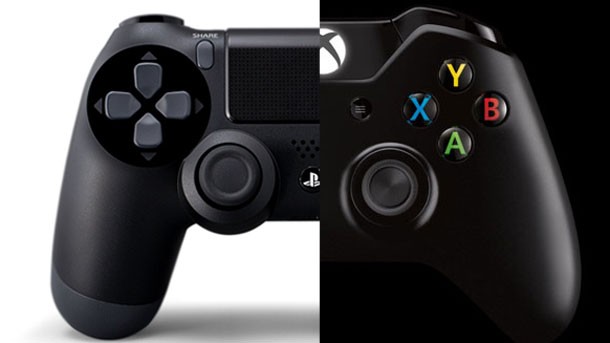
The current console generation is defined
At the start of 2015, we stated that this would be a formative year for the current console generation. In the past 12 months, we’ve seen Sony’s lead solidified (likely for the remainder of the hardware cycle). Microsoft has decided to abandon console shipment reporting, as head of Xbox Phil Spencer says he’s more invested in rebuilding the brand.
And while there are still gaps between resolution and framerate on the two consoles, that hasn’t received quite as much emphasis. Attention has instead focused on secondary features like backward compatibility and emulation, as well as the games themselves.
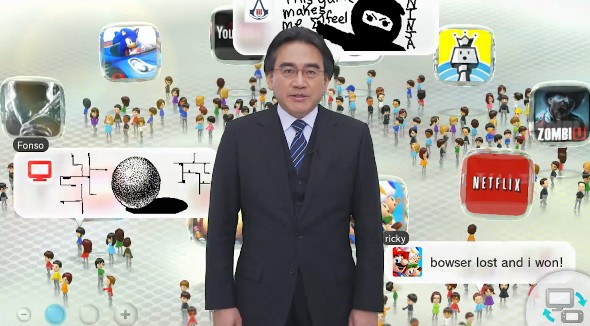
Who will Nintendo be in 2015?
In 2014, Nintendo started to rouse from its slumber. Mario Kart 8, Super Smash Bros., and Amiibos all gave the publisher a much needed adrenaline injection. Unfortunately, the subsequent delay of The Legend of Zelda and Star Fox out of 2015 put the brakes on again.
Nintendo spent most of 2015 signaling that the Wii U’s days are numbered. The company formally announced its next console, currently codenamed “NX.” It also struck a deal with DeNA to finally appease investors and take a crack at the mobile sector.
This year was also marked by tragedy for the company, as president Satoru Iwata passed away due to cancer. The publisher named former Nintendo of America president Tatsumi Kimishima to lead the House of Mario into the NX era.
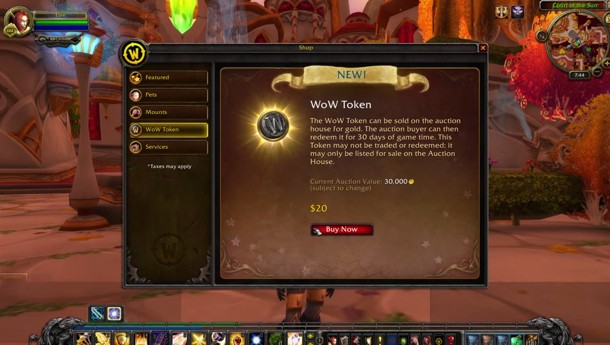
Publisher business models will adapt to survive
The last year was marked by a major transition in how publishers approach and discuss their businesses. As we mentioned in our Gaming Trends of 2015 feature a few days ago, we’re seeing a more substantial transition from a goods-based to a service-focused industry.
This is emerging in part as in-game cosmetic transactions, smaller live events for online games, and a shift away from player base-fracturing DLC. But microtransactions aren’t the only major changes we’ve seen.
Other models have been explored that bridge traditional premium offerings and free-to-play. Bethesda transitioned The Elder Scrolls Online to a subscription-optional offering. You still need to purchase the base game, but recurring revenue is derived from cosmetics and content purchases (either a la carte or as part of the monthly premium account service).
Blizzard made a big move with World of Warcraft, also. While that game still requires paid game time each month, you can now use in-game gold to purchase tokens that extend your play time. Alternatively, you can purchase a token with cash and sell it on the auction house as a way to earn spending money for your toon.
We also saw a major shift when Blizzard experienced a huge spike with the release of the Warlords of Draenor expansion, followed by a plummet by just under 50 percent in the months following. As a result, Blizzard will not be reporting subscription statistics moving forward.
Publishers and customers are in it for the long haul these days. That means added expenses for updates and server maintenance. This in turn suggests (as it has over the past 12 months) that players should anticipate monetization methods to pop up that were previously unheard of outside of free-to-play games.

The true cost of virtual reality will determine success
This discussion is still a wild card, but cost is one of the most common questions any time virtual reality comes up. Right now we only know vague details.
Oculus CEO Brendan Iribe told us that you’ll be able to get a VR-compatible computer and Rift kit for about $1,500 at retail. That price could be significantly lower if you build your own. We anticipate that high-end PC manufacturers like Origin and iBuyPower will have their own Rift-ready products.
Sony and HTC haven’t said much about pricing on PlayStation VR and Vive. The most we know is that Sony suggests that its VR solution will likely cost as much as a new console.
Read ahead for the conversations we expect we’ll be having in the new year.

With 2015 behind us, it’s time to look ahead to the topics already emerging for this year. We begin with one of the most obvious topics.
The Year of Virtual Reality
Over the coming months, three major virtual reality products will arrive at retail. Oculus is likely going to be first to market with the Rift, followed by Sony with PlayStation VR and HTC’s partnership with Valve, the Vive.
Because of that, we expect Oculus will set the pricing benchmark. Later in the year, the company will begin taking pre-orders for the recently delayed Touch controllers.
Beyond price, there are still big questions that the three companies need to answer. How will virtual reality demos reach the masses? How will software be priced? How will gaming’s social nature adapt to the isolation of head-mounted displays?
There is still so much we don’t know about how virtual reality will impact our hobby and, possibly, how we communicate with one another. We’re excited to find out as it all begins this year. For more on what we know, check out our January 2016 issue.

Publishers return to “bullet point” features, but this time it’ll be tacked-on single-player
Last year saw a spate of failures related to multiplayer-only games. Evolve, Star Wars Battlefront, and Rainbow Six Siege all stumbled, though in different degrees.
While we still believe that there is a market for full-price, multiplayer-only games, what we’ve seen so far has poisoned the well. All three of the games we mentioned above severely lacked in content, making players wonder where the resources usually devoted to solo play went.
Instead of beefing up the breadth of play or depth of features, we’ll likely see publishers create the illusion of value. This will come in the form of thin story modes that ultimately aren’t worth the time to play.
If a game is going to be multiplayer-only, it needs to have more maps, modes, and options. It can’t just be a subjectively “better” experience than it would have been if resources were devoted to a campaign.
Human nature and a plethora of reader comments tell us that consumers need a way to quantify value. Put another way, if you’re going to subtract a core gameplay pillar, you need to add something substantial in its place. And – in case you were wondering, Ubisoft – that’s not an absurd free-to-play character unlock mechanic in a retail-priced game.
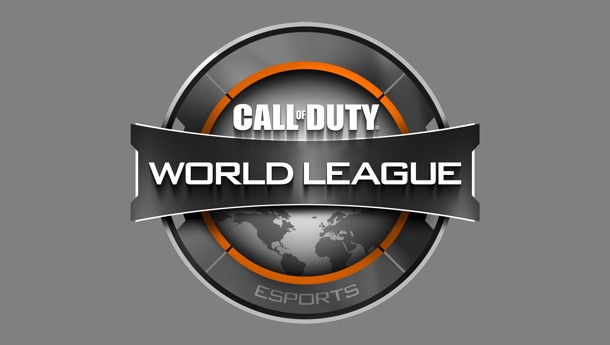
Publishers bringing eSports in-house as a key to mainstream acceptance
The end of last year brought big news for the eSports world. Activision and EA both announced the opening of new internal competitive gaming divisions.
Both mega-publishers have the leverage to more deeply connect with mainstream media and increase impressions for eSports coverage. We’re already seeing ESPN buy in, but these moves will see a real transition for the segment.
Right now, competitive gaming comes from a community development background. It’s about player retention and growth. What EA and Activision are poised to do will bring eSports closer to its traditional athletics counterparts in terms of revenue, brand recognition, and market permeation.

Auteurship will continue to be a hot topic
One of 2015’s biggest stories was the tumultuous divorce of Metal Gear creator Hideo Kojima and publisher Konami. And while Konami’s odd decisions read as disowning the favorite son, the situation brought another issue to light.
Hideo Kojima did not build Metal Gear Solid V by himself. There was a team in Japan and another in Los Angeles that built the Fox Engine and crafted what some consider the final game in the series.
Kojima, Ken Levine, Amy Hennig, Todd Howard, Sam Lake, and others might be the faces of their games and studios, but they do not work in a vacuum. It’s safe to say that those individuals will make headlines in the new year, but we cannot forget that there are entire teams behind our favorite games.

Stratification of crowdfunding will continue as fatigue further sets in
We have reached crowdfunding saturation, and that’s not a 2016 topic, or even one from 2015. This is the new normal.
Because readers have grown a thicker shell when it comes to crowdfunding, it’s going to take that much more to grab attention. This is where we’re going to see a bigger surge in auteurship that makes sense.
Established studios using a traditional model can stand to highlight the accomplishments of its quieter team members, but crowdfunding efforts are going to need to lean harder on big names. Good ideas aren’t enough anymore. Even early gameplay slices aren’t always a surefire way to the front page.
Crowdfunding projects will need to leverage every weapon in the arsenal: big names, intriguing ideas, proof of concept, and (most importantly) fiscal prudence. Consumers are starting to wise up, and there is precious little room for error when playing with the public’s money.
All eyes continue to rest on Cloud Imperium Games and Star Citizen. The project has raised over $100 million from 1 million backers. It’s not too big to fail, and CEO Chris Roberts and his teams need to make huge headway in 2016. A failure of that magnitude would do irreparable harm to the entire concept of crowdfunding, and yield a wave of negativity that could torpedo even solid pitches.
And as for changes in securities law that allows non-accredited investors to put money into crowdfunding projects for a return? You can read our thoughts on that for the full rundown.
This year is filled with enormous potential, and we're no doubt going to be surprised along the way. And while these are our expectations for what we'll be talking about, we also want to hear from you. What still lingers from 2015 that you think will remain in the news? What do you expect from the coming 12 months? Let us know.
